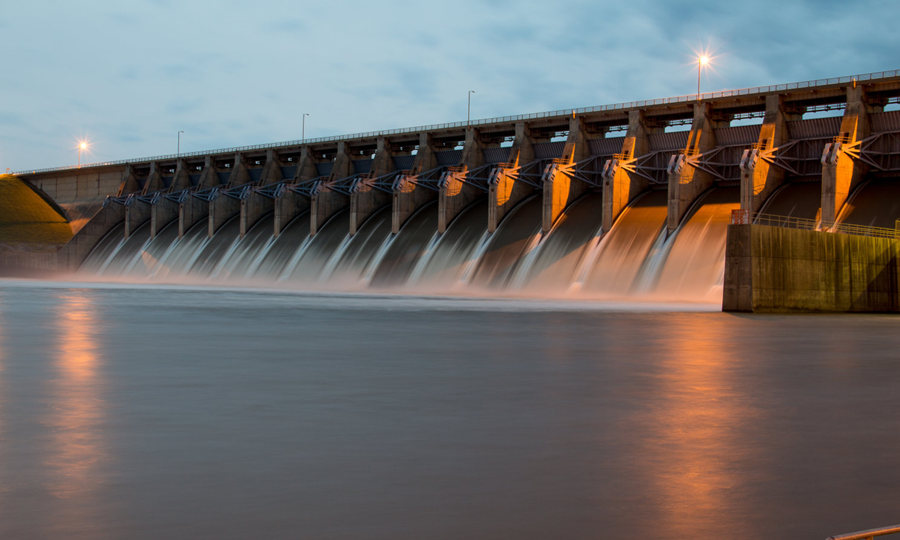The Texas storm has exposed an energy grid ill-prepared for climate change, with electric grid regulators now saying that the United States needs to rapidly develop vast supplies of power storage--including giant batteries and hydrogen storage. So, it might be wise for investors to avoid any fear associated with the wild valuations of hydrogen stocks.

Leading hydrogen companies like Plug Power Inc. (NASDAQ:PLUG), Bloom Energy Corporation (NASDAQ:BE) and Ballard Power Systems (NASDAQ:BLDP) could still be prime long-term investment candidates despite currently trading at stratospheric valuations.
PLUG, which manufactures fuel cells, gained over 1,300% in the past 12 months, and it's growing revenue at a fairly fast clip. Until recently, its key market has been forklifts with high-profile customers such as Amazon and Home Depot. But a series of big deals, most recently with Renault, look good for expansion. The only question is whether its revenue growth goals are actually realistic. If they are, then the wild valuation is a good speculative bet.
PLUG is aiming for revenue of $1.7 billion in 2024, which would be up from 2020's anticipated $327 million.
Ballard has also been cutting eye-catching deals, particularly in China, that spell expansion, though its revenue has grown slower than PLUG's, but its valuation isn't as wild.
Bloom Energy just reported its Q4 2020 results and upped its target to reach profitability a year ahead of expectations. Now, profitability is set for this year.
But on Thursday, these stocks all took a beating, precisely at the time of the Texas deep freeze, when investors should have started to see the potential reality creeping through their crazy valuations …
Investors in the energy tech of our future are fickle, and Thursday showed them having second thoughts about further upside potential. The deep freeze should have been a wake-up call … and it was, to an extent. But with overvalued stocks such as the hydrogen crew, when share prices soar too far and too fast, investors balk at the upside potential and start to pull back. It does not necessarily mean anyone should change their investment outlook on hydrogen. Not at all.
What the Deep Freeze Could Mean for Hydrogen
Over the past few weeks, dozens of states in the U.S. have been facing the wrath of the fearsome Arctic Blast. More than 100 million people are currently grappling with devastating winter storms extending from Texas all the way to New England. As previously feared, the extreme weather events have been disrupting energy grids everywhere; however, Texas has, by far, been the hardest hit.
The Lone Star State is going through one of its coldest winters in decades, with temperatures dropping to as low as 11F (-12C) in Houston and 9F (-13C) in San Antonio.
Of the 2.5 million homes and businesses in the country that have suffered power outages, about 1.9 million are in Texas. In fact, about a quarter of the state has experienced serious power disruptions resulting in failing water systems and gasoline shortages as well as hundreds of thousands of homes and cars without heat.
With millions of Texans demanding accountability for the massive disaster, Texas' politicians have, unsurprisingly, been quick to deflect blame with Texas Gov. Greg Abbott (Rep.) making absurd claims that renewable energy is to blame for the power disruptions while other top state lawmakers have been calling for investigations into the Electric Reliability Council of Texas.
Nevermind the fact that nearly two-thirds (30GW) of lost power capacity has been from thermal energy sources such as coal and gas, with only a third (16GW) from renewable energy, mostly wind power. In fact, the Electric Reliability Council of Texas (ERCOT) had warned in November that wind energy would make up less than 10% of the overall winter capacity this year.
Hydrogen as an Energy Storage System
The outages have been concentrated in Texas as the grid was forced to shed load, unable to keep pace with a massive spike in heating demand.
The Federal Energy Regulatory Commission and the North American Electric Reliability Corp. plan to launch a joint inquiry into what triggered the widespread outages across the South and the Midwest while decrying the sorry state of many power grids in the country.
"For batteries to play the ultimate backup system, we're so far away from that it's not funny," Jim Robb, CEO of the North American Electric Reliability Corp., a regulatory body, has lamented in an interview. "To really make the vision that we like to get to, a highly decarbonized electric system, you're going to have to have batteries deployed in many orders of magnitude beyond what we have now."
But maybe the situation could not have been quite as dire if Texas regulators had taken the pains to develop the state's massive hydrogen potential.
Last year, Frontier Energy, in collaboration with 10 partners including GTI and The University of Texas at Austin, launched three-year projects meant to demonstrate that renewable hydrogen can be a cost-effective fuel for multiple end-use applications. The companies chose to conduct the pilot projects in Texas in order to leverage the state's considerable wind power and solar energy resources; hydrogen pipelines, underground salt-dome storage formations, natural gas infrastructure, international port operations, and a large, concentrated industrial infrastructure.
With the International Energy Agency (IEA) predicting that renewable energy will account for 18% of the world's primary energy by 2035, there's little doubt that the age of renewables has finally arrived. Yet, renewable energy is faced with one major hurdle: It can be highly variable, intermittent, and unpredictable depending on the season, location, and weather conditions.
To solve these grid-reliability and quality issues, renewable energy facilities need to be paired with an energy storage system to provide continuous and uninterrupted energy. An effective energy storage system (ESS) is able to respond to electricity demand fluctuations that occur with daily, weekly, or seasonal cycles; react to intermittency issues from renewable energy grid-connected systems and also recover energy that may otherwise be wasted. ESS is especially critical for large-scale applications in order to improve energy security and also aid in balancing energy prices.
Green hydrogen can be a viable solution for a state like Texas.
Hydrogen is a flexible energy carrier that can be compressed, liquefied, or stored in a solid or liquid form for use in fuel cells, turbines, or internal combustion engines. Unlike natural gas, power produced by burning hydrogen produced from renewable sources is 100% clean energy and is an effective way of storing massive amounts of renewable energy--far more than any of today's batteries can hold.
And the best part for pipeline companies: Hydrogen can use the same basic infrastructure that now carries natural gas.
To get around the problem of boil-off inherent to the storage or a cryogenic hydrogen pipeline due to the heat input from ambient, pipelines can use new generation cryogenic Pipe-in-Pipe (PiP) that tolerates hydrogen permeation with no effect on the long term thermal performance of the PiP insulation properties.
With the world's green hydrogen leaders recently joining hands with an ambitious goal to drive a 50-fold scale-up in green hydrogen production over the next six years and drive down hydrogen costs to below $2/kg, thus making the fuel source competitive with fossil fuels in power generation, more states are likely to start exploring hydrogen storage as a means to enhance their power grids.
This article is reproduced at oilprice.com







